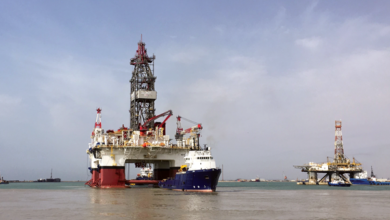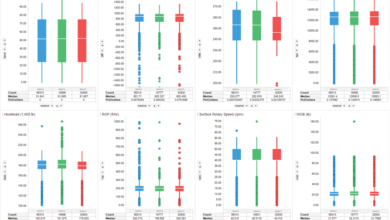People, Companies and Products July/August 2017
Ensco, Atwood Oceanics announce merger agreement
Ensco and Atwood Oceanics have entered into a definitive merger agreement under which Ensco will acquire Atwood in an all-stock transaction. The definitive merger agreement was unanimously approved by each company’s Board of Directors. Under the terms of the merger agreement, Atwood shareholders will receive 1.60 shares of Ensco for each share of Atwood common stock, for a total value of $10.72 per Atwood share, based on Ensco’s closing share price of $6.70 on 26 May 2017. This represents a premium of approximately 33% to Atwood’s closing price on the same date. Upon close of the transaction, Ensco and Atwood shareholders will own approximately 69% and 31%, respectively, of the outstanding shares of Ensco.
There are no financing conditions for this transaction. Ensco expects to realize annual pre-tax expense synergies of approximately $65 million for full year 2019 and beyond.
OriginClear to test water treatment solution in China
OriginClear, a provider of water treatment solutions, has partnered with a regional organization in the Chinese province of Shandong for remediation of a shale gas site operated by the government-owned Sinopec Group.
The two- to three-week pilot at Sinopec’s FuLing shale gas site in Chongqing, a major city in Southwest China, is intended to qualify OriginClear’s Electro Water Separation technology for integration into a multistage process that’s designed to process hydraulic fracturing and flowback water for onsite reuse.
OriginClear signed a sales license agreement with Shandong Tong Heng Environmental Technologies (SDTH) on 24 March in DongYing, the capital city of Shandong Province, where SDTH is headquartered.
Siemens to develop digital solutions for Aker BP
Siemens and Aker BP have entered a long-term partnership under which Siemens will deliver advanced digital solutions for Aker BP’s future field development projects. The partnership is focused on the design, supply and installation of electrical, instrumentation, control and telecom systems – from the preliminary phase to first oil. The framework agreement builds on Siemens’ existing work for Aker BP providing data-driven condition monitoring on the Ivar Aasen offshore project.
Wood Group and Chevron sign 10-year MSA
Wood Group and Chevron have signed a 10-year master services agreement (MSA) that allows them to deliver conceptual engineering, pre-front-end engineering design, FEED, detailed design and procurement services in multiple locations across Chevron’s global onshore and offshore asset portfolio. Contracts to provide topsides conceptual and pre-FEED for two semisubmersible platforms on the Tigris and Anchor developments in the Gulf of Mexico have been awarded as the first work orders under this new agreement.
NOV, Saudi Aramco to form JV in Saudi Arabia
National Oilwell Varco (NOV) has entered into a memorandum of understanding with Saudi Aramco to form a joint venture in Saudi Arabia.
Through its manufacturing and fabrication facilities and drilling technologies, the joint venture will manufacture high-specification land rigs, rig and drilling equipment and offer certain aftermarket services.
Patterson-UTI, Seventy Seven Energy close merger
Patterson-UTI Energy has closed its merger with Seventy Seven Energy. Stockholders of Seventy Seven Energy are entitled to receive 1.7851 shares of newly issued Patterson-UTI common stock in exchange for each share of Seventy Seven Energy. Patterson-UTI issued approximately 47.5 million shares pursuant to the merger.
Anadarko announces leadership changes
Anadarko Petroleum Corp announced its Board of Directors has named Daniel E. Brown as Executive Vice President, International and Deepwater Operations, and Bradley J. Holly as Executive Vice President, US Onshore Exploration and Production. Darrell E. Hollek, formerly Executive Vice President, Operations, will serve as a Senior Adviser until his retirement later this year.
Anton Dibowitz to succeed Per Wullf as Seadrill CEO

Anton Dibowitz, currently Chief Commercial Officer and Executive Vice President of Seadrill, will be appointed as Chief Executive Officer, effective 1 July 2017, following a succession planning process that was implemented during 2016. Mr Dibowitz will succeed Per Wullf, who will remain a Director of the company.
Longueville to be Chief Digital Officer for Vallourec
Vallourec has announced the appointment of Barthélémy Longueville to the position of Chief Digital Officer (CDO). He will be tasked with steering Vallourec’s digital strategy, alongside Philippe Crouzet, Chairman of the Management Board.
Hrncir appointed as VP of Sales and Service for Weir
Weir Oil & Gas announced the hiring of John Hrncir as Vice President of Sales and Service, Pressure Control. Mr Hrncir will be responsible for safety, sales and aftermarket services for Weir’s pressure-control business and will be based in Houston. He will oversee growth for the company’s North America pressure-control unit, which includes wellhead and surface control products and services.
Alliance formed to provide well intervention packages
Halliburton, Trendsetter Engineering and C-Innovations have formed a strategic alliance to provide Gulf of Mexico customers with technologically advanced, integrated offshore well intervention packages. The combined packages will improve operator efficiency while addressing in-field production and subsea challenges.
In separate news, Trendsetter and Add Energy have been awarded a contract to supply engineering expertise and access to Trendsetter’s Relief Well Injection Spool in support of an operators’ drilling campaign on a newly sanctioned field development.
Pemex to license 3D seismic data from Schlumberger
Schlumberger and Pemex have signed an agreement to license data from the WesternGeco Campeche wide-azimuth (WAZ) multiclient seismic survey in the Salina del Istmo province of the southern Gulf of Mexico. The agreement also includes collaboration with WesternGeco in the seismic processing phase of the project, as well as for future technology collaborations. This multiclient contract is the first of its kind for Pemex in Mexico and provides access to new 3D WAZ seismic data in the province.
The data license covers shallow- and deepwater areas in the basin close to prolific geological trends with well-established hydrocarbon systems, including the Cantarell and Ku-Maloob-Zaap reservoirs.
Products
Dynamus PDC bit prevents lateral vibrations
 Baker Hughes has released its Dynamus extended-life polycrystalline diamond compact drill bit, which can reduce drilling costs by eliminating trips to replace bits or bottomhole assembly tools that wear out in high-horsepower drilling operations.
Baker Hughes has released its Dynamus extended-life polycrystalline diamond compact drill bit, which can reduce drilling costs by eliminating trips to replace bits or bottomhole assembly tools that wear out in high-horsepower drilling operations.
The bit is built on a robust frame that incorporates stabilizing elements to prevent lateral vibrations, as well as proprietary cutters engineered to minimize wear.
Technology monitors field personnel in real time
Wellfence has introduced a technology to gather and store the number and identity of personnel entering and leaving oilfield drilling and production locations.
The system comprises Wellfence Towers deployed on access roads that act as electronic checkpoints, a key fob-like Well-ID that is issued and registered to each worker authorized to be on location and a Wellfence-manned central monitoring center.
By pressing the enter button on the Well-ID, the user’s name and unique ID number, along with the time of entry onto the property, are recorded in real time. When the exit button is pressed, the system registers the time at which that specific person left location. Enter and exit directions are programmed into the tower to confirm vehicle direction.
Digital technologies built into GE water solution
GE Water & Process Technologies has launched OnBoard, a water treatment solution and service plan for offshore oil and gas producers. It incorporates digital technologies, remote monitoring and diagnostic software, membranes, chemicals, sulfate removal technology and offshore field and process expertise. GE’s InSight APM software is a standard feature in all OnBoard service packages.
Lloyd’s Register launches VR Safety Simulator
Lloyd’s Register has launched its Virtual Reality (VR) Safety Simulator to support training and knowledge transfer in the energy industry. The simulator utilizes high-powered computing to simulate real-life situations with a high degree of interactivity for the user. Its training allows both young and experienced trainees at its Global Academy Training Centers to explore training possibilities by building on the remote training solutions being developed by its training center experts.
Delmar systems unveils releasable mooring system
Delmar Systems has launched its RAR Plus and the MOOR-Max Releasable Mooring System. The RAR Plus is the next generation of Rig Anchor Release (RAR), with added features such as a manual backup release method and increased ultimate and release load ratings. In addition, it transmits both direct and indirect line tension measurements from internal sensors for real-time display onboard the rig. RAR Plus is a key component of the MOOR-Max system, which combines acoustic mooring release technology with proprietary methods.
Weir mobile app offers asset management solution
 Weir Oil & Gas has developed a mobile application for iPhone or Android devices to bring the benefits of the SPM Asset Management Program to the field. Weir is leveraging the use of radio frequency identification technology to register each asset by serial number.
Weir Oil & Gas has developed a mobile application for iPhone or Android devices to bring the benefits of the SPM Asset Management Program to the field. Weir is leveraging the use of radio frequency identification technology to register each asset by serial number.
Through this technology, a spread of iron can be accounted for in minutes versus hours compared with a manual process. This approach also reduces human error by automating the inventory process.



